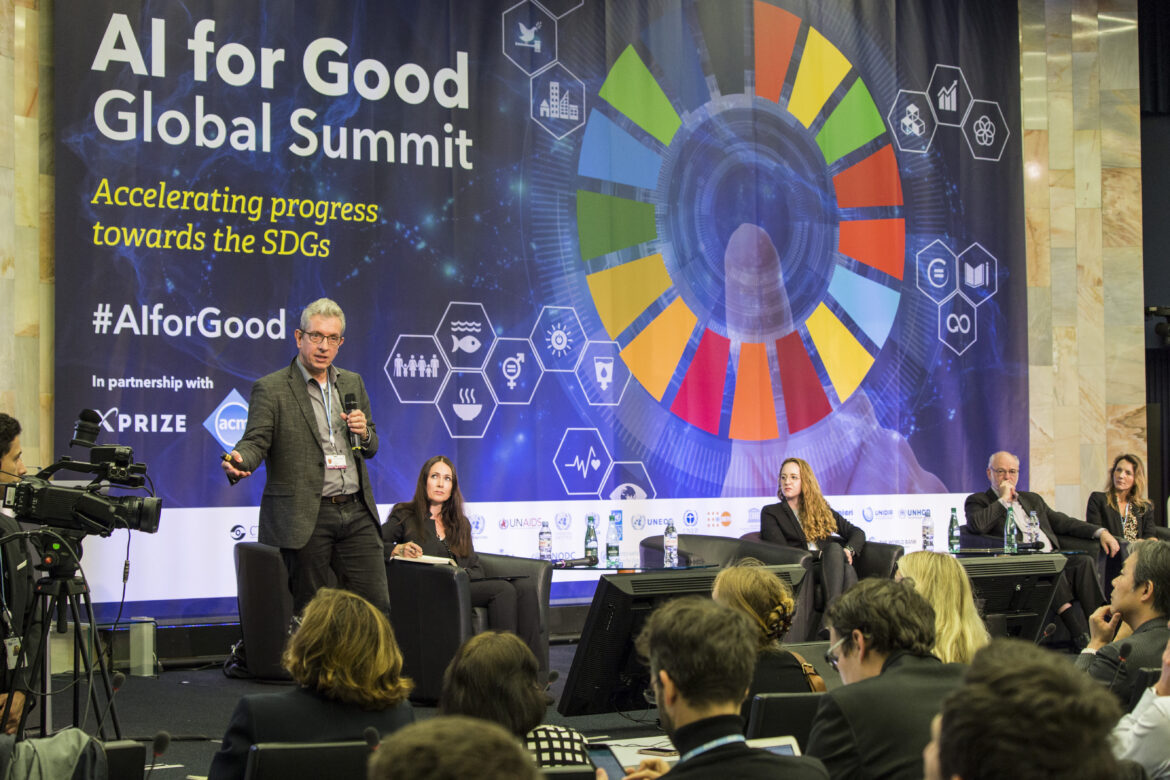Excerpt: Analyzing the reverberations of METRON; an artificial-intelligence-powered software developed by UNICEF backed startup KIMETRICA; which claims to be able to detect malnutrition in children in developing countries.
2023 has been dubbed the ‘year of AI’, thanks to numerous advancements in the field that are far-reaching and increasingly creative. While the negative effects of AI continue to be highlighted in mainstream media, a niche category of AI exists, in which unique and entrepreneurial AI creations are being used for public good within the field of International Development. One of the most recent and lauded examples of this comes from the research team at Kimetrica in Kenya and aims to employ artificial intelligence in detecting malnourishment and malnutrition in children – predominantly in developing countries.
Kimetrica is a UNICEF Innovation Fund graduate of 2020 and a growing social enterprise focusing on technological innovation through experimental research. The organization developed the Methods for Extremely Rapid Observation of Nutritional Status (MERON) technology as an alternative and modernized method to detect malnutrition in children in developing nations. MERON technology works by using “model ‘trainable’ neural networks to extract facial features” of children. It then combines this data with information on gender, age and ethnicity to predict the presence and severity of malnutrition within children.
This new technology presents itself as an alternative to the two previously popular methods of assessing malnourishment in children. The first, Middle-Upper Arm Circumference Measurements (MUAC), is the traditional method for measuring malnutrition in children. MUAC uses specialised colour coded bands to measure child arm circumference and thereby classify a child into either well-nourished, moderate malnutrition, or severe malnutrition. Weight-for-Height Ratio is the secondary traditional form of measuring malnutrition. Per its title, this technology takes two easy to obtain measurements and utilizes them to place a child on a healthiness scale. The drawbacks of these two traditional forms of detecting malnutrition stem from their more invasive methodology requiring physical examination; compared to Kimetrica which simply uses digital imaging. Moreover, pilot research suggests that Kimetrica can outperform the MUAC method by eliminating human error often present within medical diagnoses, and by drawing more information than measurements which may not reflect the full picture of health.
While Kimetrica was the trailblazer in delving into the field of applying AI to examining health in children, there have since been other companies stepping into the field. Notably Microsoft’s Child Growth Monitor has been converted into an app using infrared sensors to make its assessments. The startup company NutriAI is an additional player in this field with their proposal for software that combines AI malnourishment detecting technology with known health data about a particular child to reach its conclusions. However, NutriAI diverges from Kimetrica in that its priority lies in business incentives rather than in emerging nations. While Kimetrica’s priorities lie specifically in aiding to eliminate child malnutrition, NutriAI’s primary goal is selling individual health analyses to those that can afford it.
The rapid emergence of this sector of AI points to the increasing demand for modern solutions to time-old problems. However, it also raises key questions that plague the entire AI industry; surrounding responsible data usage and safe applications of this lucrative technology.
The Oxford Insight’s Government AI Readiness Index from 2022 has laid out ideas for governmental response and responsibility when it comes to rapidly changing AI technology. It asserts that governments lack “understanding about precisely what foundations are needed … to integrate AI into services,” and beyond that, “what it takes for AI to then be used in government effectively and responsibly.” This statement provides a useful basis for analyzing the legislative power that governments should have over technology like Kimetrica; contending that it is difficult for AI technology to be used to effectively solve issues like malnutrition, without governmental direction and approval.
Moreover, it is arguable that governmental authority should preside over AI-based technology in this field for security reasons as well as charitable ones. There exists an inherently monetary nature behind the highly personal data collected about vulnerable members of the population; which would prove dangerous if made publicly available. The need for safe usage of this technology is especially relevant in the case of children. The UNICEF Office of Global Insight and Policy proposed several policy recommendations for companies like Kimetrica to act on when dealing with MERON and similar technology. Highlights of these suggestions include safety for children at the forefront and a demand for shareholders in the project to remain transparent with all involved parties and invested in the core values of each project.
Anita Shah, the Managing Director of Kimetrica’s Kenya Office in an interview with UNICEF, praised Kimetrica’s advancements as being revolutionary for its concrete applications of AI and its vision of productive change. When contrasted with other forms of AI, Kimetrica’s work can be seen as vital to global health analysis and invaluable in making strides towards solution of the global problem that is child malnutrition.
This tension between emerging AI forms, governmental authority and economic power is not limited to just the health sector of the technology industry. In almost every facet of society, AI is being investigated and implemented for its regenerative and futuristic properties. However, it is crucial that the risks of such technology are not negated or overshadowed by its profit possibilities. Developments like Kimetrica have the potential to build an honest and lasting reputation for AI, if governments and companies manage to effectively collaborate to manage this transformative but potentially dangerous technology.
Edited by Justine Delangle

Sophie Hill joined the Catalyst team in September 2023 and is her first year at McGill University studying International Development Communications. Her research interests include media, culture, technology, international conflict and global justice. Sophie aims to approach her writing from an ethical perspective and seeks to provide analysis using a variety of diverse sources to educate and inspire Catalyst readers.

